Written by Alan Kelly, Bōde’s Chief Economist
To understand what’s happening in the real estate market you have to look at supply and demand.
The best proxies for supply and demand are:
Supply
- New supply: New Listings (i.e. the number of homes recently listed for sale)
- Total supply: Inventory (i.e. the total number of homes listed for sale)
Demand
- Sales (i.e. the number of homes recently sold)
Supply & Demand
- Months of Supply (i.e. the number of months it would take to sell all current inventory at the current rate of sale)
These metrics are the best indicators of the health of the real estate market. Let’s look at what they show us.
Calgary continues to see demand outpace new supply in the aftermath of the COVID-19 outbreak.
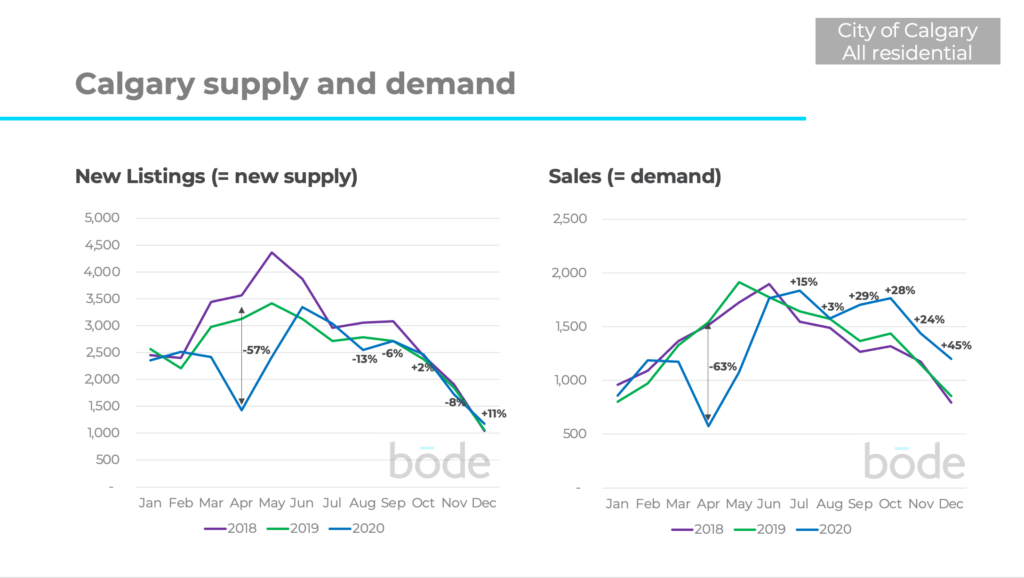
New listings in December were up 11% while sales were up a whopping 45% vs. the previous 2 years. Sales have been significantly stronger than usual since July this year, and almost closed the gap that opened up from March to May. Despite COVID, total sales for the year finished down just 1% on 2019. We expect sales to continue to stay higher than typical for January and February 2021.
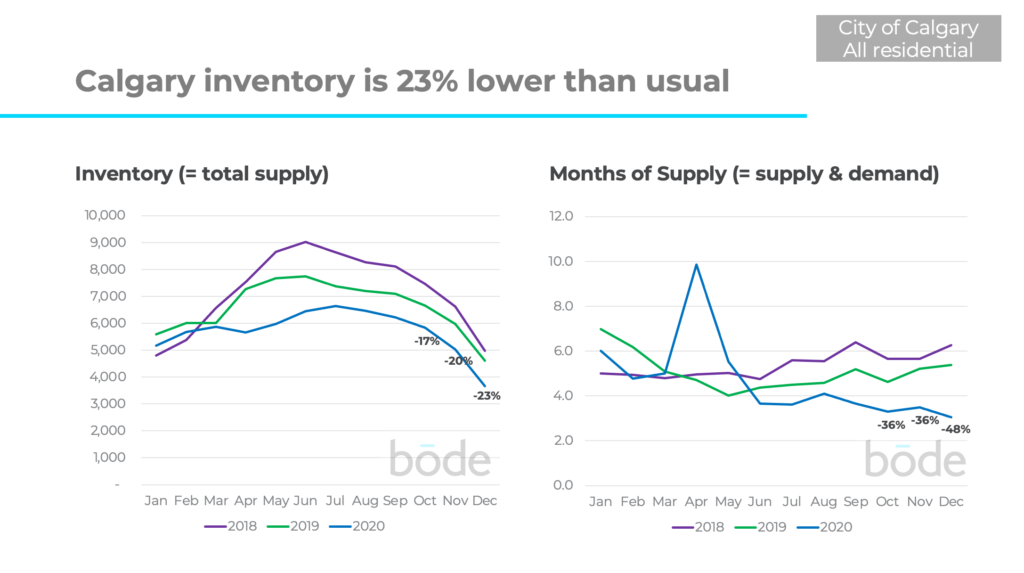
As a result of sales outpacing the number of new listings, the total number of homes for sale is down 23% compared to the average of the previous 2 years.
The combination of less supply and more demand has sent ‘months of supply’ even lower to just 3.1 months which is down 48% vs the previous 2 years.
Fewer months of supply generally makes conditions more favourable for sellers, while higher months of supply is more favourable for buyers.
The overall picture is similar in Edmonton, where total supply is down 22% while sales continue to be strong, up 37% from previous years.
This is the 6th consecutive month of exceptionally strong demand in Edmonton. There were 5% more sales in 2020 than in 2019 even with the significant drop in March to May due to COVID.
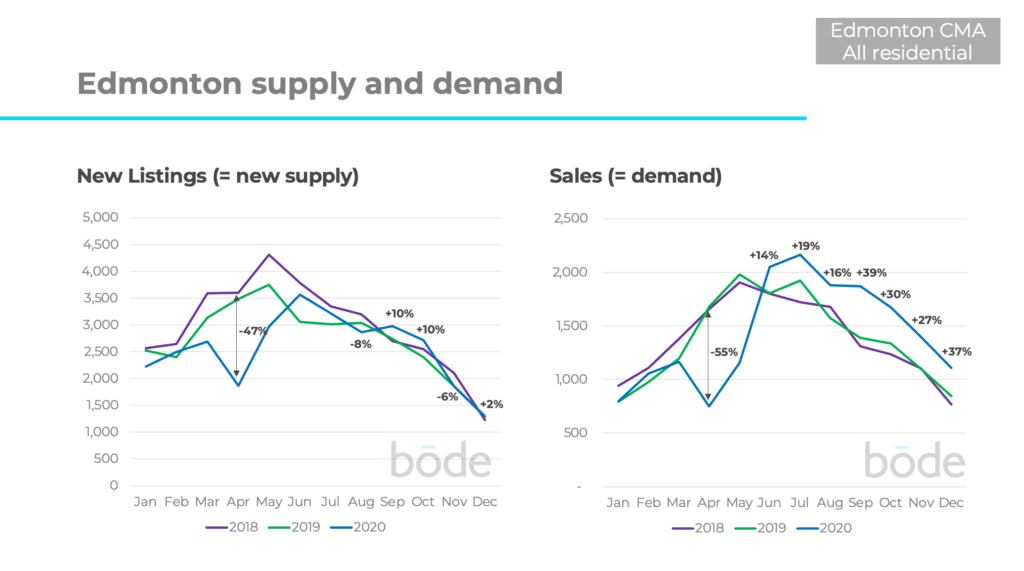
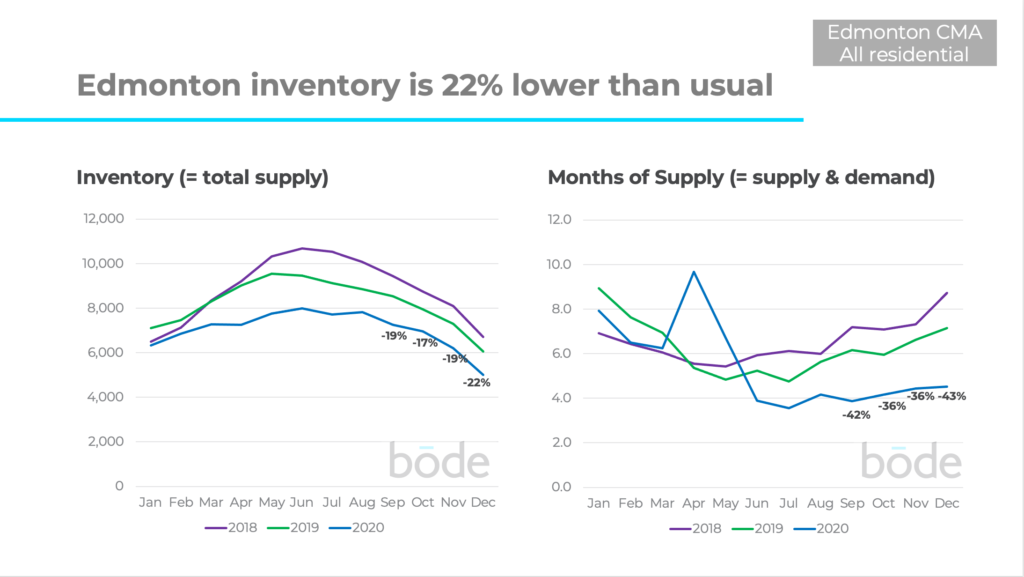
What does this mean for sellers?
Right now supply is low relative to previous years, and demand is high which means it could be a good time to sell your home. Many people assume January & February is a difficult time to sell a home. However right now there is less competition and but higher demand than typical, so sellers who price their home well have a good chance of selling quickly. However, your specific property value will be determined by market forces both within your community and against similar active listings. To find out what supply and demand look like for your community, click here.
What does this mean for buyers?
In Calgary and Edmonton, there are currently fewer options than there have been in previous years. This means active buyers need to move faster to beat other buyers to the available listings. One way you can move faster is by booking viewings directly through Bōde, so you don’t have to wait for a realtor to schedule your viewings.
Market conditions vary substantially by property type, community and price range
Above, we’ve looked at the overall markets for Calgary and Edmonton, but different segments are performing very differently. Let’s look at a few examples.
In December, sales of detached homes were up 43% vs the previous years. As a result, overall supply of detached homes is down 36% compared to previous years.
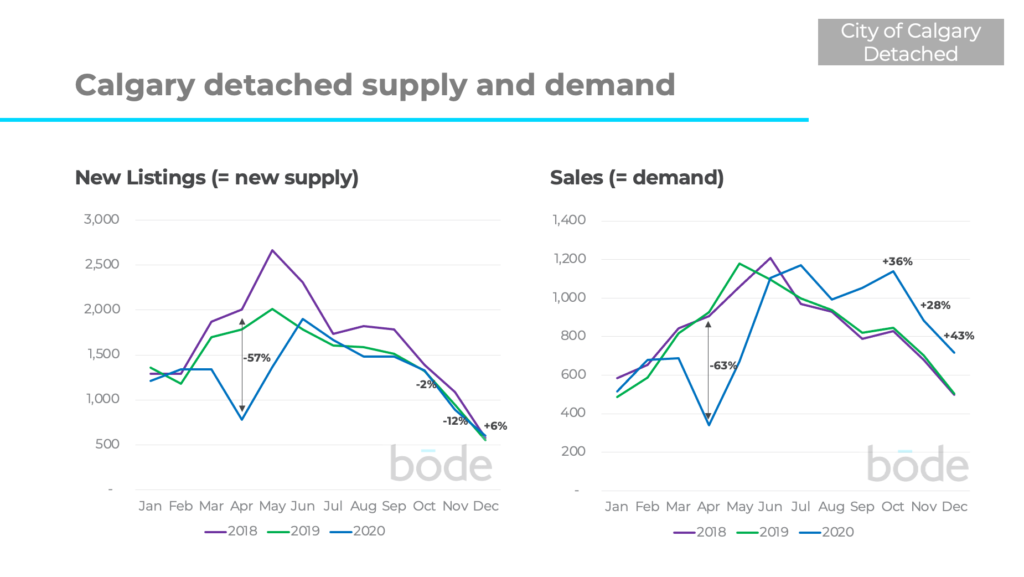
This has led months of supply to be down 55% to just 2.2 months, which means it’s one of the best times in recent years to be selling a detached home, and one of the toughest time to be buying as there’s considerably less inventory than normal to choose from.
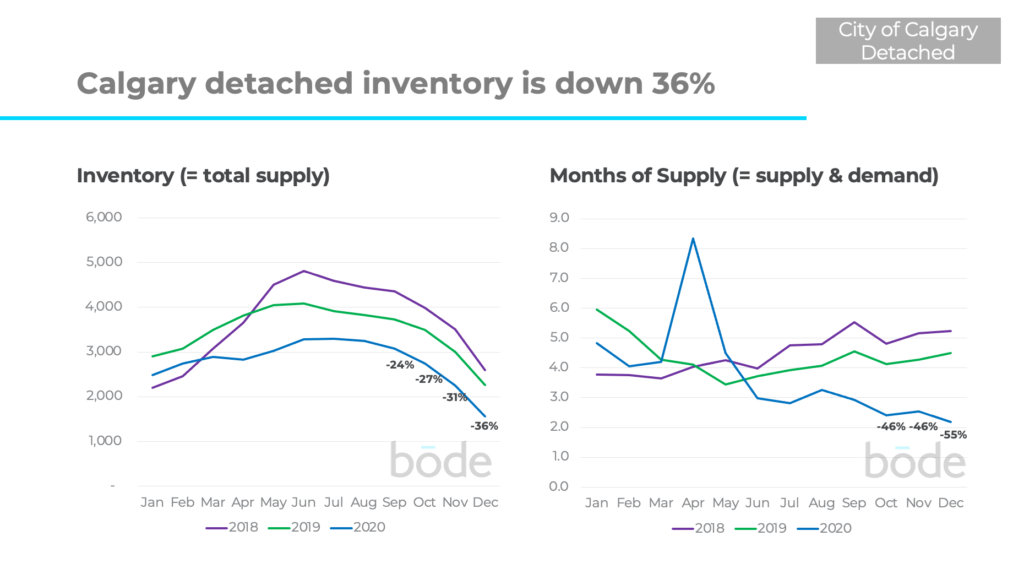
On the other end of the spectrum, there is currently 6.4 months of supply of apartments in Calgary – making it a buyers market.
New listings of apartments were up 27% in December, however sales were stronger than usual for December (up 54%!). Despite a good December of sales, recent months have generally seen more new listings than sales, so overall inventory of apartments is up 8%.
Buyers have a lot of apartment options which makes it more difficult for sellers to achieve the price (and speed of sale) they might have wanted.

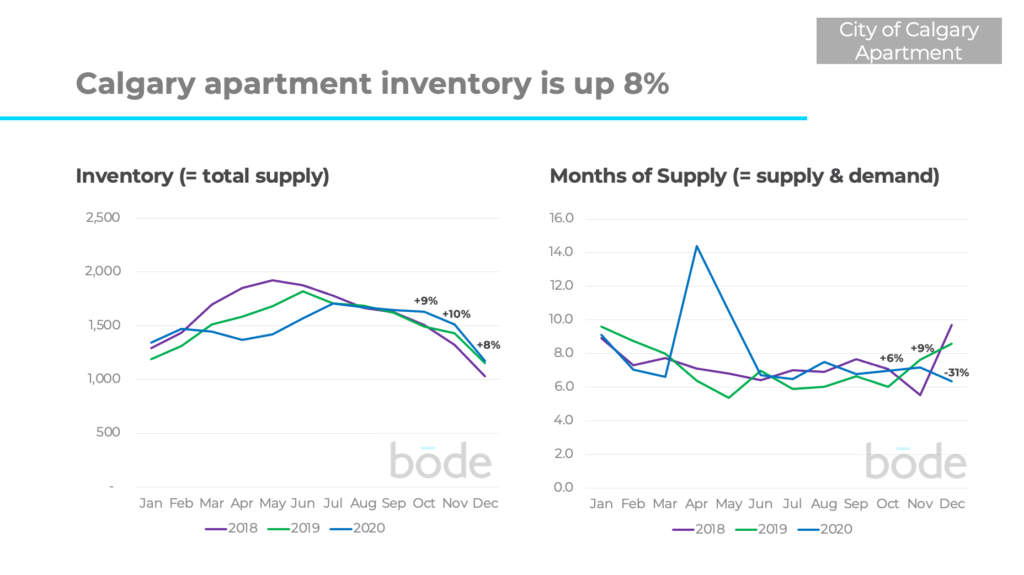
Attached homes (i.e. semi-detached or row homes) saw 9% more new listings in December vs previous years. Sales remained strong at +44% compared to the last 2 years.

This caused total inventory to fall further (-25% vs previous 2 years) and months of supply to drop to 3.1 months.
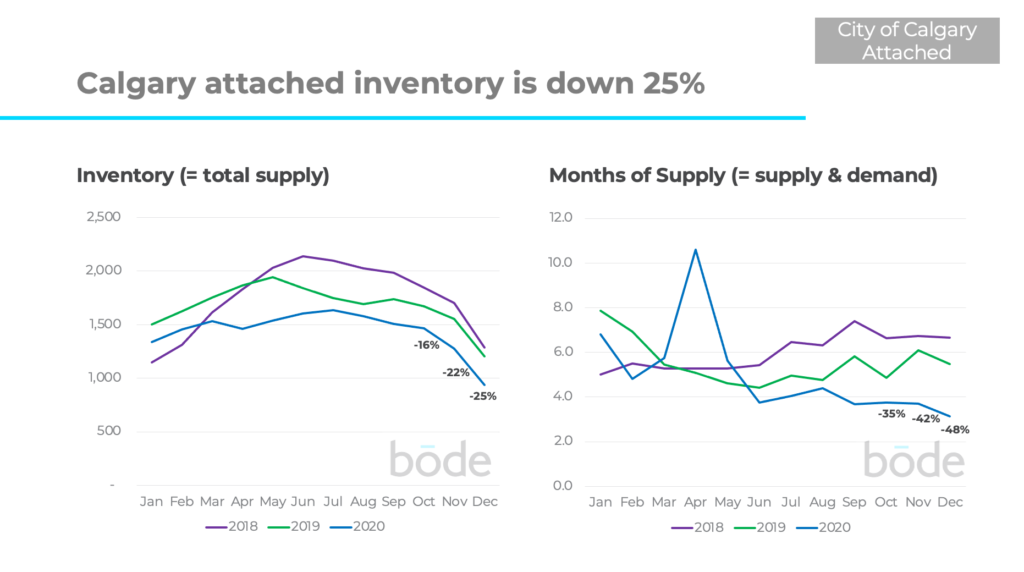
In general, you’re in a much better position if you’re selling a detached or attached home right now compared to an apartment, due to less supply and greater demand.
However, even this analysis is still too high level to understand what’s happening in your specific local property market. There are some communities of the city and some price bands where detached homes are performing better/worse, and the same goes for apartments.
It’s critical to understand the dynamics in your local property market
To understand your local property market, you need to look at your local data. Head over to Bōde’s Market Data dashboard, the only place where you can see all the data yourself, including being able to filter on community, property type, and price range to see exactly what’s happening where you live.


